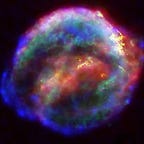The James Webb telescope: A complete guide
The James Webb telescope, also known as JWST or Webb, is the most powerful and complex telescope ever built and sent to space. This will fundamentally alter the understanding of our Universe.
Webb often gets called the replacement for Hubble, but we prefer to call it a successor. Hubble’s science pushed us to look to longer wavelengths to “go beyond” what Hubble has already done.
The James Webb Space Telescope is an infrared observatory that will complement and extend the discoveries of the Hubble Space telescope, with a longer wavelength and increased sensitivity. The longer wavelength will enable Webb to look much closer to the beginning of time and hunt the first galaxies' unobserved part.
Webb will also look through the interstellar dust where the planetary systems and the stars are forming today.
Why is it infrared?
Why is a powerful infrared observatory key to seeing the first stars and galaxies that formed in the universe? Why do we even want to see the first stars and galaxies that formed? One reason is… we haven’t yet! The microwave COBE and WMAP satellites saw the heat signature left by the Big Bang about 380,000 years after it occurred. But at that point, there were no stars and galaxies. In fact, the universe was a pretty dark place.
So, simply say Webb will discover the early stars or galaxies and can look back through time. So, this telescope is a treasure to astrophysicists and astronomers. Webb can look through different Epochs after the Big Bang. And because of its high sensitivity sensors, it can detect the CMB (cosmic microwave background) and also light emitted from the early stars.
To find the first galaxies, Webb will make ultra-deep near-infrared surveys of the Universe, and follow up with low-resolution spectroscopy and mid-infrared photometry (the measurement of the intensity of an astronomical object’s electromagnetic radiation). To study reionization, high-resolution near-infrared spectroscopy will be needed.
Webb will be the premier observatory of the next decade, serving thousands of astronomers and astrophysicits worldwide. It will study every phase in the history of our Universe.
Wavelength:
Webb will observe primarily in the infrared and will have four science instruments to capture images and spectra of astronomical objects. These instruments will provide wavelength coverage from 0.6 to 28 micrometers (or “microns”; 1 micron is 1.0 x 10–6 meters). The infrared part of the electromagnetic spectrum goes from about 0.75 microns to a few hundred microns. This means that Webb’s instruments will work primarily in the infrared range of the electromagnetic spectrum, with some capability in the visible range (in particular in the red and up to the yellow part of the visible spectrum).
Primary Mirror:
JWST’s mirror is much larger than the Hubble Space telescope. We can see that the mirrors are arranged in a honeycomb structure. Webb will have an approximately 6.5-meter diameter primary mirror, which would give it a significantly larger collecting area than the mirrors available on the current generation of space telescopes. Hubble’s mirror is a much smaller 2.4 meters in diameter and its corresponding collecting area is 4.5 m2, giving Webb around 6.25 times (see calculation) more collecting area! Webb will have significantly larger field of view than the NICMOS camera on Hubble (covering more than ~15 times the area) and significantly better spatial resolution than is available with the infrared Spitzer Space Telescope.
How will Webb observe the Birth of Stars?
Star formation begins when molecular cloud cores cool and fragment to form dynamic clusters of protostars spanning the mass spectrum from O stars down to planetary-mass brown dwarfs. Individual young stars are often encircled by disks of warm gas and dust within the clusters, where material aggregates from protoplanetary systems. The stars interact strongly with their environment through jets, outflows, and radiation. Young stars, brown dwarfs, and circumstellar disks emit the bulk of their radiation in the near- and mid-infrared, and in the early stages, the shorter wavelengths are absorbed by dust. Webb’s near- and mid-infrared imaging capabilities will enable surveys of molecular clouds and star-forming regions. Webb’s integral field spectroscopy capabilities will allow detailed observations of individual targets.
What is Webb’s lifetime?
Webb will have a mission lifetime of not less than 5–1/2 years after launch, to have a lifetime greater than 10 years. The lifetime is limited by the amount of fuel used for maintaining the orbit, and by the testing and redundancy that ensures that everything on the spacecraft will work (mission assurance). Webb will carry fuel for a 10-year lifetime (with margin); the project will do mission assurance testing to guarantee 5 years of scientific operations starting at the end of the commissioning period 6 months after launch.
Launch Vehicle:
The James Webb Space Telescope will be launched on an Ariane 5 rocket. The launch vehicle is part of the European contribution to the mission. The Ariane 5 is one of the world’s most reliable launch vehicles capable of delivering Webb to its destination in space. The European Space Agency (ESA) has agreed to provide an Ariane 5 launcher and associated launch services to NASA for Webb. The Ariane 5’s record for successful consecutive launches is 80 (as of June 28, 2017).
The James Webb Space Telescope will be a giant leap forward in our quest to understand the Universe and our origins. Webb will examine every phase of cosmic history: from the first luminous glows after the Big Bang to the formation of galaxies, stars, and planets to the evolution of our own solar system.
This telescope discovers the hidden secrets in the universe. So be prepared to be amazed!
